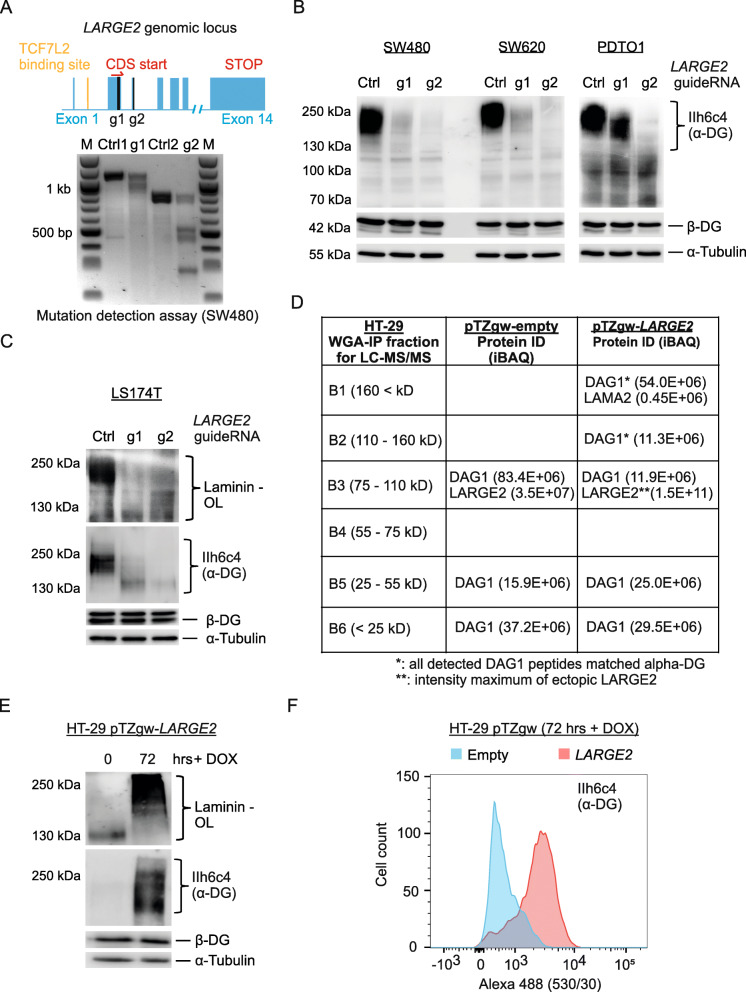Fig. 3.
LARGE2 mediates functional O-glycosylation of α-DG in CRC. A) Upper panel: LARGE2 exons indicated as blue bars. GuideRNA 1 and 2 (g1, g2) target sites in black, TCF7L2 binding site in yellow, start of coding sequence (CDS start) in Exon2 and STOP in Exon 14 (both in red). Lower panel: Mutation detection assay on genomic DNA from SW480 cells edited via CRISPR/Cas9 to achieve LARGE2 KO (g1, g2) or control (Ctrl). M: Marker. B) KO of LARGE2 by CRISPR/Cas9 in SW480 and SW620 cells (left panel) and PDTO1 (right panel) using g1 or g2. Western Blot analysis of WGA-enriched glycoproteins was used to detect α-DG, WCL were used to detect β-DG and tubulin. C) Immunoblot analysis and laminin overlay (Laminin-OL) of WGA-enriched glycoproteins after KO of LARGE2 via CRISPR/Cas9 in LS174T cells. β-DG and tubulin were analyzed on WCLs. D) LC-MS/MS analysis on HT-29 control (empty) or LARGE2 over-expressing cells. Cell lysates enriched for glycoproteins were run on SDS-PAGE and divided into 6 MW fractions B1-B6. Proteins of interest (DAG1, α-DG, LARGE2, and LAMA2) and their iBAQ (Intensity Based Absolute Quantification) are shown. E) Immunoblot analysis and laminin overlay (Laminin-OL) of WGA-enriched glycoproteins upon conditional ectopic expression of LARGE2 in HT-29 cells (500 ng/ml DOX for 72 h). WCL were used to detect β-DG and tubulin. F) Flow cytometry analysis on control infected HT-29 cells (Empty, blue profile) or LARGE2 over-expressing cells (red profile) after treatment with DOX for 72 h. Cells were stained with IIh6c4 antibody and anti-mouse Alexa 488 secondary antibody. See Additional file 6E for secondary antibody control

